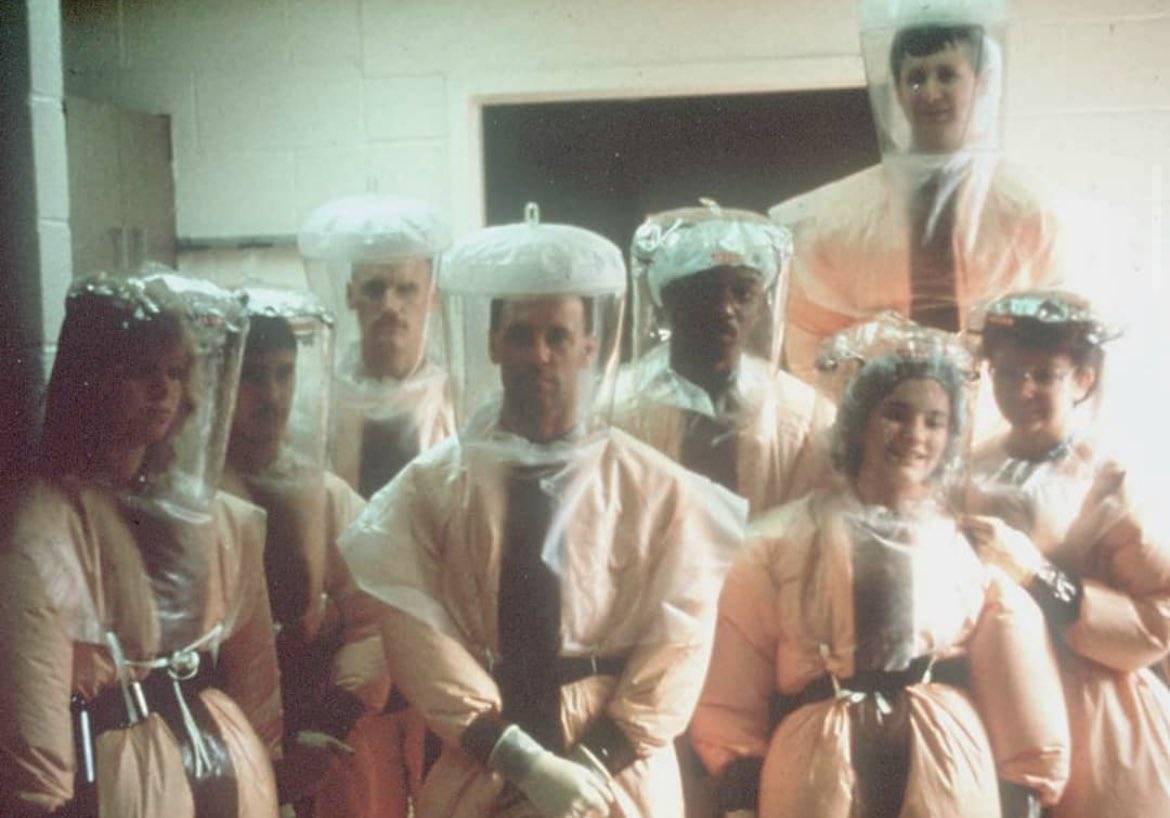1989 Veterinary Medicine Division team at the U.S. Army Medical Research Institute of Infectious Diseases (USAMRIID) discovered ebola could be spread airborne in primates.
30 years ago, scientists in a lab facility in Reston, Virginia were grappling with monkeys that had been shipped to their lab from the Philippines that tested positive for Ebola. As the monkeys became sick and started to die, the scientists began to try and establish protocols to prevent the spread of the disease in humans.
U.S. Army veterinary pathologist, Nancy Jaax was at the center of the situation and put her life on the line to prevent an outbreak.
In a recent interview with Nat Geo, she says, "The thing that scares you the most is that it was going to get out of the building. The very first outbreak of a filovirus [the group of viruses that includes Ebola] was a virus called Marburg, and it happened in a vaccine facility where they produced polio vaccine. A lot of people got infected with the virus and died, so that engendered the current quarantine regulations, which state that any non-human primate coming into the country is quarantined for 30 days because these viruses always break in quarantine. The monkeys in Reston were in quarantine, but what you worry about is if there had been a human exposure who worked in the lab and then got sick and then it transitioned to somebody else. So that's your big worry."
The tense situation at the U.S. Army Medical Research Institute of Infectious Diseases in 1989 echoes the dramatic events surrounding the discovery of Legionnaires' disease in 1976.
After an American Legion convention in Philadelphia, over 200 attendees fell ill with a mysterious respiratory ailment, and 29 died. Dr. Joseph McDade, an epidemiologist at the Centers for Disease Control and Prevention, was instrumental in isolating the bacterium responsible, later named Legionella pneumophila.
Like Nancy Jaax and her team dealing with the Ebola threat in Reston, McDade and his colleagues faced a race against time to identify the cause and potential spread of a deadly, unknown pathogen. Both events were pivotal in shaping public health policy and biosecurity measures. While the Reston incident revealed the alarming possibility of airborne transmission of Ebola among primates, the Legionnaires' outbreak led to new guidelines for building ventilation and water supply systems.
In both cases, the professionals involved took significant personal risks to understand and contain lethal infectious diseases, dramatically influencing subsequent research and safety protocols.


